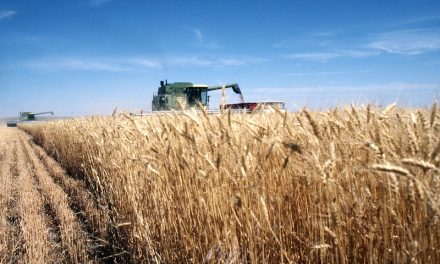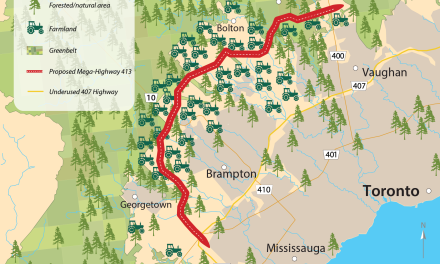Ontario is one of the least windy provinces in Canada, except for pockets around the Great Lakes…which is also where the country’s most dense population is found, along with some of its best farmland.
Farmers spray pesticides and herbicides to control bugs and weeds. In windy areas – and indeed, even in calm areas, where stubborn inversions sometimes occur – farmers need to be concerned about spray draft. That’s the unintended aerial movement of plant protection products away from the intended target.
Pesticides and herbicides that drift onto non-targeted plants in adjacent fields can impact yields and quality. That’s bad enough if it’s the farmers’ own fields that are affected.
But it gets worse when spray drifts onto their neighbours’ operations…waterways, pastures, orchards, gardens and municipal green spaces included. Property lines don’t always stop pesticides and herbicides from working, regardless of where they start, if drift occurs.
Farmers avoid spraying on windy days. Besides the potential agronomic and environmental troubles, spray drift impacts farmers’ bottom line, which is already stretched to the max. Farm chemicals are expensive and losing them to the wind is like throwing money away.
To address and more importantly avoid drift problems, a new campaign called Be Drift Aware has been launched by the agriculture and food sector.
The campaign is based on three approaches.
First, it implores farmers to be aware of the size of their sprayer nozzles. This is a science in itself. The larger the droplet size, the less the drift. Bigger droplets are heavier and more likely to stay on course to the target, according to campaign literature.
Second, the campaign suggests lowering sprayer booms to a height that is as low as is practical.
The boom needs to be high enough to ensure complete coverage, it says, but not so high to cause drift.
“A lower boom is a slower boom, and a slower speed reduces drift and improves coverage,†it says.
And finally, the campaign says, be wind aware. You’d think that’s a given: don’t spray when it’swindy.
But how windy? It turns out ideal spraying conditions are when the wind is between 3-10 km/h. Ironically, if the wind speed is too low and the air is still, an inversion can occur in which droplets are suspended in the atmosphere instead of reaching their target. Drift potential increases in this scenario.
Of course, some people will ask why farmers need to spray at all. Good question.
Here’s why. As long as insects and weeds are among us, and we want farmers to produce food as inexpensively as possible, pests that reduce food production will need to be controlled.
Some small farms can manually control pests. But not medium- to large-scale modern farming operations. And with chronic labour shortages in all sectors, manual labour of any kind is increasingly less attainable.
Thanks to science, today’s farm chemicals are supposed to be safer than ever. They’re more targeted, as is the machinery that applies them…that is, until drift takes over.
So let’s support farmers’ efforts to lower the boom on drift, use as few chemicals as possible and keep chemicals where they belong.
Photo credit: BeDriftAware.ca





